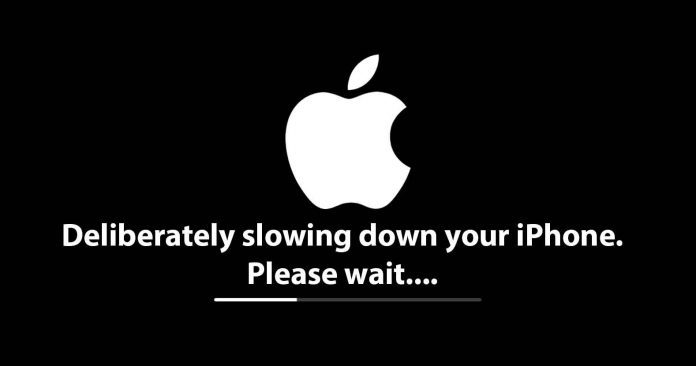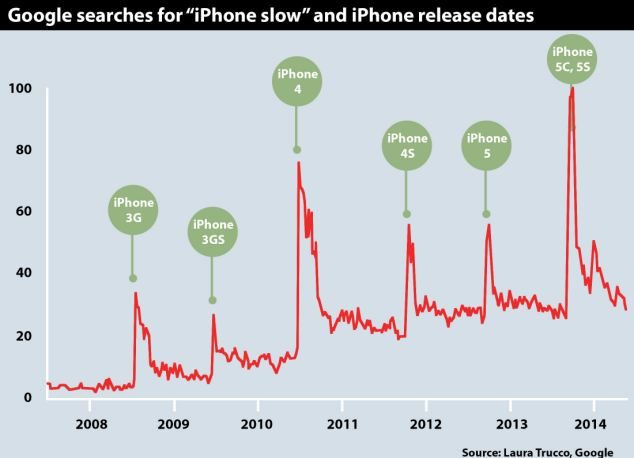Disinformation sites have been reporting this for years as proof a Harvard study found that Apple deliberately slows down phones upon the release of new ones. While those articles have all been fake news designed to get clicks, we now have real proof that Apple throttles processor speeds upon new updates. In fact, Apple admitted to it.
The recent discussion about throttled processor speed began after a Reddit post went viral last week. The op wrote that Apple appears to be slowing down old iPhones that have low-capacity batteries. Indeed, they are.
According to Apple, this deliberate throttling of processor speeds on older phones is an effort to keep them running smoothly. Apple claims they are slowing down your older iPhone so they can keep your iPhone from unexpectedly shutting down.
The throttling, according to Apple, began last year-despite years of reports from users. Instead of fixing a hardware issue after users began to report widespread malfunctions with the iPhone 6s battery, Apple started to algorithmically alter how the phone uses power. The phone feels slower because it actually is slower. Apple says this improves safety.
When reached for comment, Apple basically confirmed the findings but disputes the assumed intention:
Our goal is to deliver the best experience for customers, which includes overall performance and prolonging the life of their devices. Lithium-ion batteries become less capable of supplying peak current demands when in cold conditions, have a low battery charge or as they age over time, which can result in the device unexpectedly shutting down to protect its electronic components.Instead of telling customers who bought the phones-which cost upwards of $850-that they were going to throttle the phone's performance, Apple simply rolled out the update and told no one. And now, they have the audacity to call this deliberate throttling a "feature."
Last year we released a feature for iPhone 6, iPhone 6s and iPhone SE to smooth out the instantaneous peaks only when needed to prevent the device from unexpectedly shutting down during these conditions. We've now extended that feature to iPhone 7 with iOS 11.2, and plan to add support for other products in the future.
It's not just iPhone 6 users either. As the Verge reports, Geekbench developer John Poole has mapped out performance for the iPhone 6S and iPhone 7 over time, and has come to the conclusion that Apple's iOS 10.2.1 and 11.2.0 updates introduce this throttling for different devices. iOS 10.2.1 is particularly relevant, as this update was designed to reduce random shutdown issues for the iPhone 6 and iPhone 6S. Apple's fix appears to be throttling the CPU to prevent the phone from randomly shutting down. Geekbench reports that iOS 11.2.0 introduces similar throttling for low iPhone 7 low-capacity batteries.
Now, this tech giant has begun damage control and is telling everyone that they had to do this to keep the devices working smoothly. But this raises the question: would Apple customers willingly buy a device that they know will be throttled in upcoming updates and not perform like they expect?
Instead of dropping the performance of the devices which many of the users are probably still paying for through their cell carriers, Apple should replace the batteries-at no charge.
As CNBC notes, sure it's an expensive undertaking for Apple, but a user should be guaranteed a certain level of performance for the lifetime of a product, until Apple stops supporting it with new software.
However, it appears Apple has no intention of doing so, most likely because the throttling of older iPhones undoubtedly boosts sales of newer ones.
Apple is not alone in this facade of product integrity. In fact, selling products that are designed to fail is now an unfortunate reality among most consumer items. It even has a name-planned obsolescence.
Planned obsolescence or built-in obsolescence is a policy of planning or designing a product with an artificially limited useful life, so it will become obsolete after a certain period of time. The rationale behind the strategy is to generate long-term sales volume by reducing the time between repeat purchases (referred to as "shortening the replacement cycle").
Sound familiar? This appears to be exactly what Apple is doing and it is no coincidence that they are the largest tech company in the world.
The good news is that consumers hold the power. Without your dollars, these companies have nothing. How Apple proceeds is up to you. If you keep paying for a device that you know will begin to degrade six to eight months after you buy it, this is your fault. However, consumers have the power to stop purchasing these iPhones until Apple makes it right.
Will you vote with your dollars and refuse to give the 8th largest company in the world your money until they fix this problem, or, will you roll over and take it, letting them walk all over you? The choice is yours.
Comment: Most technology nowadays runs on computer chips and is connected to the grid leaving the customer at the mercy of the corporation who is free to tweak the product however they see fit. The potential impact these 'updates' can have is concerning, as demonstrated by the Tesla company which increased the battery power in their cars to help those fleeing hurricane Irma: Tesla Boosts Car Battery Power During Irma, Raising Questions of Control





Comment: A lawsuit has already been filed against Apple: